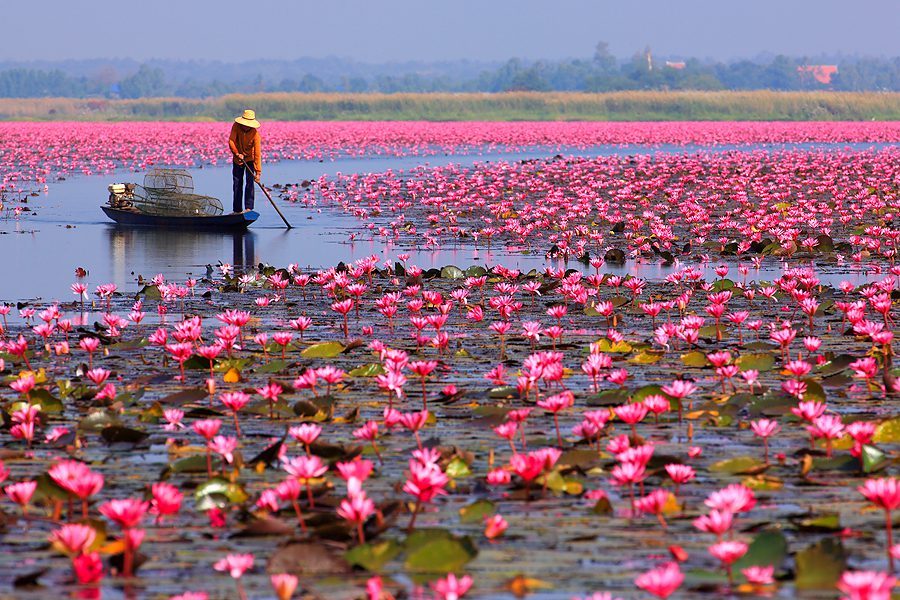
Currently, the Bio-Circular-Green (BCG) economic model is being applied to various sectors, as it promotes sustainable development through the integration of bioeconomy, circular economy, and green economy. Notably, the agricultural and tourism sectors are leveraging the BCG model to foster sustainable agro-tourism. Most recently, a model cultural tourism route centered on sticky rice in Udon Thani province, a pioneering province, has been developed to promote creative economy from cultural capital. This strategy seeks to uplift the income and living standards of sticky rice farmers through modern agriculture along the cultural routes of the Mekong River, or BCG-NAGA Belt Road. It serves as a rapid action plan, or Quick Win, for BCG in the agricultural sector.

The cultural tourism model in Udon Thani province that centers around sticky rice includes locations such as the Red Lotus Sea, Wat Hai Sok, Wat Suwan Nari, Kham Chanot, Ang Nam Pan Phu Phra Bat Historical Park, Wat Pa Bo NGim, Huay Luang dam, Phu Foi Lom, and Sapan Hin Tha Li.
The province has developed two sticky rice cultural tourism villages. The first is the Ang Nam Pan ecotourism agro-tourism community enterprise group in Chiang Da subdistrict, Sang Khom district. This village promotes itself as a model sticky rice cultural tourism village, combining conservation-based tourism (Eco-tourism) and the development of a sticky rice cultural market. It includes attractions such as nature-watching on Ang Nam Pan (at the Mad Houseboat), buffalo watching on Tam Island, and learning about organic and mixed farming. It has been adapted to accommodate tourists by installing solar cell systems on the houseboat for charging phones, fans, sound systems, and cooking. It is a low-carbon community that utilizes local waste materials. Furthermore, it serves as a learning center for all aspects of sticky rice cultivation, as a community producing rice seeds (such as Hom Naga sticky rice variety, and the Kor Khor 6 sticky rice variety) and has developed a wide variety of products from sticky rice. It continues to develop and prepare to become a future tourist attraction.
The second group is the conservation-oriented Homestay community enterprise in Baan Chiang Wae, Chiang Wae subdistrict, Kumphawapi district. Located near Nong Han, a large natural freshwater lake, this location becomes a "red lotus sea" from December to February each year, when red lotus flowers bloom across the lake. The tourist spot includes accommodation, restaurants, and souvenir shops to cater to tourists coming to see the red lotus sea and worship sacred objects according to legends. It also produces rice seeds, has experimental rice seed plots, and offers a wide variety of products derived from sticky rice, thus preparing and developing to become a tourist attraction.
These two groups exemplify the initiatives under the BCG-NAGA Belt Road project, aiming to develop a creative economy from cultural capital related to sticky rice. They also utilize digital technology to upgrade production and ensure sustainable income in the future.
Data updated on May 15, 2023
Source: The Digital Government Development Agency
Tel. +66 2612 6060